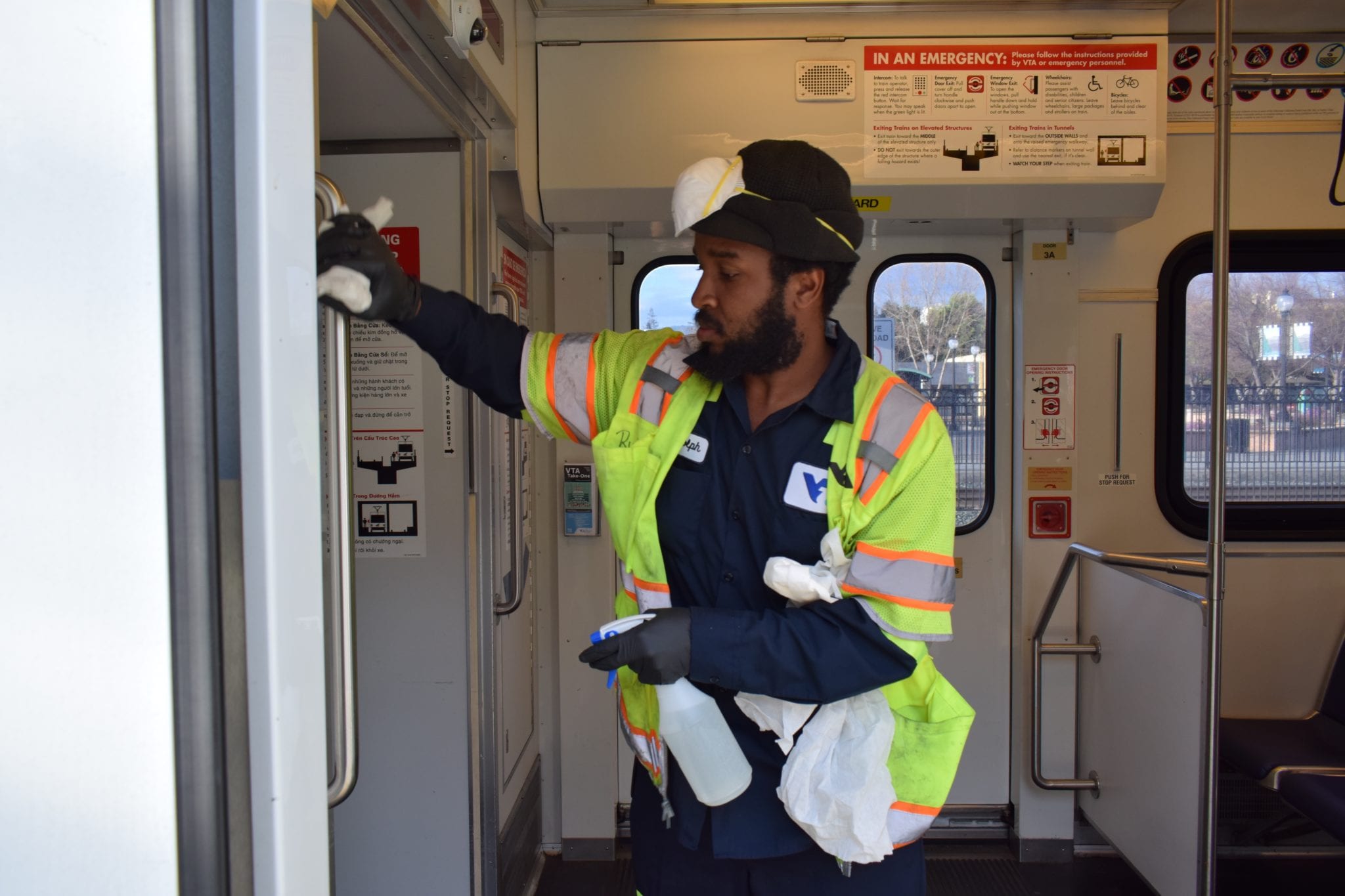COVID-19 is hitting black and Latinx people hardest, preliminary Santa Clara County data show. Meanwhile, those same groups are the ones most in need of financial relief in the region, community groups say.
The pandemic’s racial disparities show officials must center race in discussions to address the public health crisis and Silicon Valley’s economic recovery, according to nonprofit and advocacy leaders.
“It’s a tale of two valleys,” said Poncho Guevara, executive director of Sacred Heart Community Service, who joined 20 other community-based organizations in a letter Wednesday requesting Santa Clara County supervisors incorporate more racial data in the county’s COVID-19 response.
“People are living in different conditions, in different neighborhoods with conditions of overcrowding, making less money than their counterparts,” he said. “Here in the same valley, the access to educational opportunities, employment opportunities and health care are all weighted against them.”
Latinx residents accounted for the largest share of cases and deaths in the county — 33 percent of reported infections and 34 percent of fatalities — despite comprising 27 percent of the population, public health data shows.
Meanwhile, black people make up 2 percent of Santa Clara County and represent 2 percent of the COVID-19 cases, but 6 percent of the reported deaths.
Santa Clara County Health Officer Dr. Sara Cody told reporters this week that the Public Health Department is working to collect more data on race and ethnicity to examine the role “social determinants of health” have on communities of color, including housing, access to affordable fruits and vegetables, health care, transportation and history of trauma and discrimination.


“All of those factors — as well as structural factors like structural racism — impact and inform our health and our health outcomes,” Cody said. “And what we’re seeing across the country is the importance of understanding those social determinants of health and understanding how they can inform our actions to better prevent, control and mitigate the impact of COVID-19.”
On the other end of the spectrum, white people accounted for 19 percent of cases and 25 percent of deaths, though the demographic accounts for 34 percent of county residents. Asian Americans comprise 33 percent of Santa Clara County residents, but 23 percent of cases and 32 percent of deaths.
About 17 percent of cases have unknown racial or ethnic data.
Even so, COVID-19’s disparate effects bleed outside of hospitals and morgues. A Pew Research Center survey found that 61 percent of Hispanic adult respondents said they or someone they know has had to take a pay cut or lost a job, compared to 44 percent of black respondents and 38 percent of white respondents. Similarly, Hispanic and black Americans were less likely to have a “rainy day” fund compared to white residents, Pew found.
Latinx and black people comprise large shares of the food supply and transportation workforces as well as other sectors deemed essential during the region’s shelter-in-place orders. That puts those groups at greater risk for exposure to COVID-19, nonprofit leaders and advocates say.


In Silicon Valley — where 200,000 jobs have been lost in Santa Clara County alone — Sacred Heart launched an $11 million COVID-19 relief fund as part of the public-private Silicon Valley Strong initiative in March. The fund ran out in three days after 4,500 families applied for assistance to pay for rent, food and other basic necessities. As of Wednesday, about 10,000 people were on the waitlist.
Guevara said 90 percent of applicants identified as people of color and half were considered extremely low-income. Many are undocumented, which precludes them from receiving federal or state aid, including the one-time federal $1,200 stimulus payment sent out this month, or the additional $600 in weekly unemployment benefits granted under Congress’ coronavirus relief bill.
Nearly half of San Jose residents seeking local assistance came from five city ZIP codes, concentrated in working-class communities of color around downtown and the east side with some of the county’s highest rates of poverty and overcrowding, Guevara said.
In downtown’s 95112, the African American Community Services Agency runs a distribution program, where many Latinx, Asian and black residents seek necessities and common pandemic supplies, like face masks and sanitizer, diapers and baby formula. Many elderly African Americans are scared to leave their homes, so staff have delivered groceries, emergency supplies and checked on residents at home.
“We’re just seeing a reenactment of what history has already told us,” said Milan Balinton, director of the agency.


Nationally, black people have been disproportionately represented in COVID-19 cases and deaths. While black residents are spread out in Santa Clara County, as opposed to centralized communities like some other major cities, they still have the highest chance of dying from the virus if infected. Statewide, this also bears true, as black, Pacific Islander and Native Hawaiian Californians are overrepresented in COVID-19 data.
“Here we are, almost two weeks from shelter-in-place ending, and now we’re having the race conversation,” Balinton said. “But in the beginning of this pandemic, we should have talked about this.”
It’s important to expand data not just on cases and deaths, but hospitalizations and testing, said Alison Brunner of the Law Foundation of Silicon Valley, which helped draft a letter to county officials this week on behalf of nearly two dozen community organizations.
The group also asked for other indicators, such as housing status, to help inform policymakers considering reopening the economy. Above all, people of color need voices in decision-making, the letter says.
“Even with the best of intentions, if we don’t take into account those structural inequities and racism when deciding on how we’re trying to rebuild after this crisis, then we’re going to increase the likelihood of perpetuating — and maybe even reinforcing — the status quo,” Brunner said. “What we really need to be doing is addressing the long-term disinvestment in communities of color, communities that have been shouldering this burden.”
Contact Eduardo Cuevas at [email protected] or follow @eduardomcuevas on Twitter.



Leave a Reply
You must be logged in to post a comment.